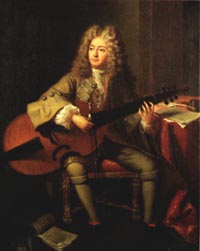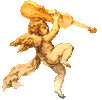Marin
Marais and his Time : Establishing
a Basis for the Interpretation of his Works

I. Biographical
Information
II. The Viola
da Gamba in France: 1600–1680
– Mersenne– Remarks
about the construction of the French viol – Influence
of the English solo literature, consort literature:
The English in Flanders – The State of the arts
in Germany and Holland: Finger, Schenck, Steffkins,
Höffler, Kühnel, Nicolai, Gabriel Schütz,
Funck – French music for consort: Eustache Du
Caurroy, Estienne DuMont, Moulinié, Charpentier – The
Crystallisation of the French Suite: the lute and harpsichord
traditions – Germinal works for the solo viol:
Hotman, Du Buisson, De Machy – The «concerts» by
Le Sieur de Sainte-Colombe
III. The Treatises
Danoville (1685), Rousseau (1687), De
Machy (1685), Loullié (ca.
1700) – The different styles of playing: Solo, basso continuo,
pièces d'harmonie, pièces de melodie, improvised
divisions
IV. The controversy:
jeu de melodie, jeu d'harmonie
– Hotman, De Machy
V. The suite
de pièces – history of the form
– Du Buisson, De Machy – Marais – the other violistes
VI. The types
of movements
– Prèlude, Fantaisie, Caprice, Boutade, Bourresque – Allemande,
Double – Courante – Sarabande – Gigue – Autres
danses : Menuet, Gavotte,
Rondeau, Chaconne– «Pièces
de caractére» – the genrepièces – The «Sonate»
VII. Prescribed
ornamentation, free ornamentation
VIII. The
seven «coups d'archet» and the rhethorical
rules of singing
The "secret annotations" in one of the books by Marais
IX. Tempo
in France: 1690 – 1738
X. The French
Style abroad |
 Available : order
now !!! Available : order
now !!! |
"An
incomparable French Violist da gamba, whose works
are known in all of Europe". Thus described
Johann G. Walther the extraordinarily gifted composer
and performer, Marin
Marais, who left us the most important body of
music for the viola da gamba in France. Marais studied
the viol for six months with Le
Sieur de Sainte-Colombe, with certainty the most
prominent teacher in Paris. He also studied composition
with Jean-Baptiste
Lully, who bestowed upon him the singular privilege
of conducting the opera orchestra in his place. The
five volumes of Pièces de Viole which he published
between 1686 and 1725, contain suites principally
of dances for one, two or three viols with basso
continuo, together with genre pièces of a
descriptive nature. Poetical inspiration, finely
cultured melody, clearly organised periodicity and,
above all, bonne grâce characterise his style
IN 1686 MARIN MARAIS (1656-1728), then 30 years old, presented
himself to the long expectant Parisian public through
his revolutionary first book of Pièces à une
et deux violes not as an emerging young talent, but rather
as a mature, successful, prominent and recognised artist
of the first category. By virtue of its imposing scale
(the solo viol part alone fills around 150 pages!), of
the meticulous care in the notation of the indications
for performance (ornaments, bow strokes, fingerings,
etc), of the luxuriously and aesthetically perfectly
wrought copper plates executed by the Parisian engraver,
M. Bonneüil, but, above all, by virtue of the profound
expression of Marais' personal musical language, whose
ambitus reaches from high drama to the most sublime emotions,
this magnificent volume reduced all other compositional
efforts of his contemporaries to mere shadows. It set
a standard which would never be equalled, nor seriously
challenged in times to come. The graceful creations of
Du Buisson, whom one cannot deny a prominent role in
the development and forming of the French suite, lack
the inner spirit, without which these works remain but
delightful trivial diversions.
The formless attempts at composition which his conceited
contemporary, Le Sieur De Machy, published in 1685, demonstrate
regrettably little expressive content, notwithstanding the
fact that his long preface indeed contains substantial information
concerning performance practice of the times, particularly
on the viol. Even the "concerts a deux violles" by
his teacher, Sainte-Colombe, occasionally imbued with a pinch
of poetry but more often revealing grave inadequacies in
compositional construction, turn pale when juxtaposed to
the exquisitely chiselled melody and the nobly flowing basses
of his gifted pupil.
It is
in the sublimely expressive art of the keyboard
compositions of Louis
Couperin (who, by the way, owed his discovery
in the province to the fact that he was heard by
a Parisian nobleman as a ten-year-old child singing
and playing the viol simultaneously, who then offered
to sponsor his studies in the capital!), - truly
the quintessence of his epoch, in the highly cultivated
theatrical diction of Molière and Racine as
well as in the musical language - coined by that
General Commissar of all Musick in France, Jean
Baptiste Lully - of the "tragedie lyrique",
a form raised to the pinnacle of perfection of
the Era, in which one may find the noble origins
- the Pegasus Fountain - for the crystallisation
of the poetical art of Marin Marais. JV
|

 Available : order
now !!!
Available : order
now !!!









